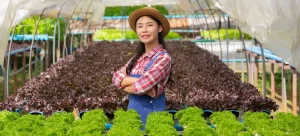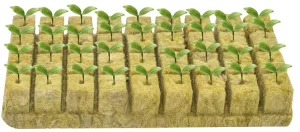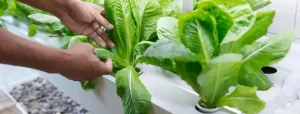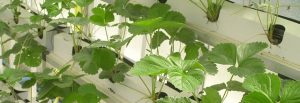Build Your Own Ebb and Flow Hydroponic System
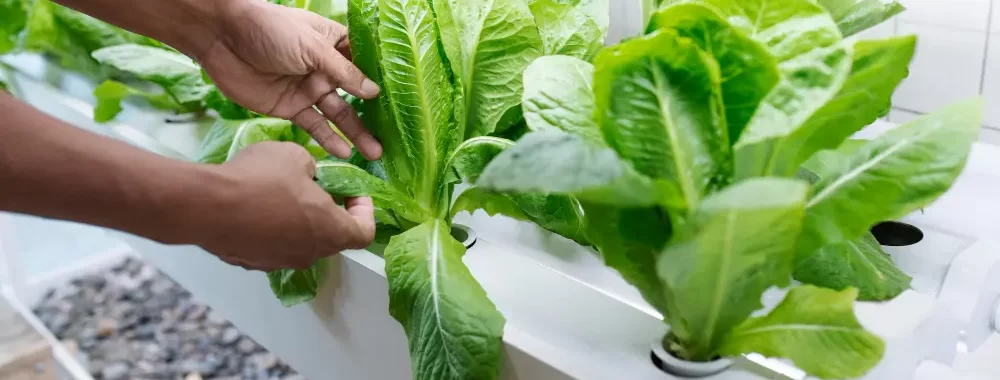
Table of Contents
Hydroponics is a method of growing plants without soil, using nutrient-rich water as the growing medium.
The ebb and flow hydroponic system, also known as the flood and drain system, is a popular type of hydroponic system that uses a pump to periodically flood the plants with nutrient solution, which then drains back into a reservoir. This hydroponic system allows for efficient nutrient uptake by the plants and provides oxygen to the roots, leading to faster growth and higher yields. Building your own ebb and flow hydroponic system can be a fun and rewarding way to grow fresh produce at home.
The Benefits of ebb and flow hydroponic system
Ebb and flow hydroponic system offer several benefits over other types of hydroponic system and traditional soil-based growing methods. Here are some of the key benefits of ebb and flow systems:
- Water and nutrient conservation: Ebb and flow systems are highly efficient in their use of water and nutrients. The system only pumps water and nutrients to the plants when needed, reducing waste and saving resources.
- Increased plant growth: Plants grown in ebb and flow systems tend to grow faster and yield more produce than plants grown in traditional soil-based systems. This is because the plants receive a steady supply of water and nutrients, which allows them to focus their energy on growth and development.
- Reduced pests and diseases: Ebb and flow systems are less prone to pest and disease issues compared to soil-based growing methods. This is because there is no soil for pests and diseases to take hold in, and the controlled environment of the system makes it easier to spot and treat any issues that do arise.
- Easy to maintain: Ebb and flow systems are relatively low-maintenance compared to other hydroponic systems. The system is simple to set up and requires minimal daily maintenance, making it a great option for busy growers.
- Versatile: Ebb and flow systems can be used to grow a wide variety of plants, from herbs and vegetables to fruits and flowers. The system is also scalable, so it can be adapted to fit any size or space requirements.
List of materials used in the Ebb and Flow Systems
- Grow tray: This is the container that holds the plants and nutrient solution. It can be made of plastic, metal, or other materials, and should be sturdy enough to hold the weight of the plants and water.
- Reservoir: This is the container that holds the nutrient solution that will be pumped into the grow tray. It can be made of plastic or other materials, and should be large enough to hold the amount of solution needed for your system.
- Submersible pump: This is the pump that will be used to move the nutrient solution from the reservoir into the grow tray. Look for a pump that has a flow rate that matches the size of your system.
- Timer: A timer will be used to control when the pump turns on and off, allowing the nutrient solution to flow into the grow tray and then drain back into the reservoir.
- Overflow fitting: This fitting will allow excess water to drain from the grow tray back into the reservoir, preventing overflow.
- Drain fitting: This fitting will allow the nutrient solution to drain back into the reservoir after it has been pumped into the grow tray.
- Growing media: This is the material that will support the plants in the grow tray. Popular options include expanded clay pebbles, coconut coir, and rockwool.
- Net pots: These are the containers that will hold the plants in the grow tray. They should be sized to fit the type of plant you are growing.
- pH and nutrient testing kit: This kit will be used to monitor the pH and nutrient levels in the system, ensuring that the plants have the right balance of nutrients for optimal growth.
- Nutrient solution: You’ll need a hydroponic nutrient solution that provides all the essential nutrients that plants need to grow.
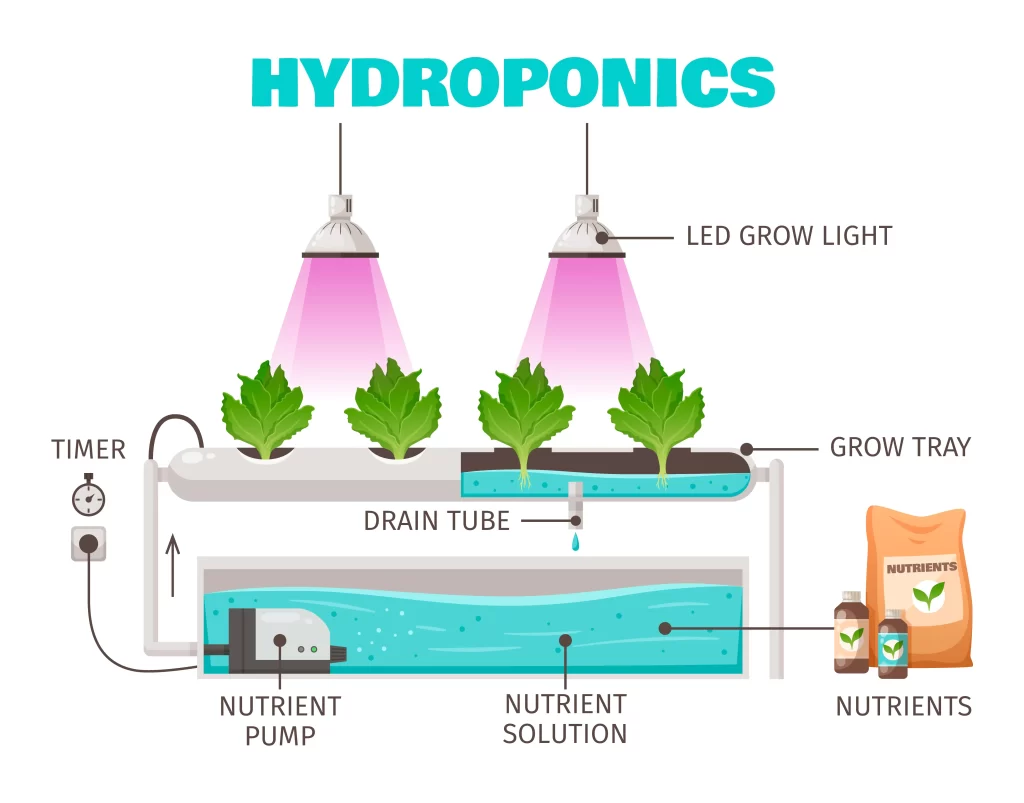
Where to purchase the system materials from
- Hydroponic supply stores: These stores specialize in selling everything you need for hydroponic gardening, including grow trays, pumps, timers, and nutrient solutions. You can find hydroponic supply stores in most major cities, and many also have online stores that ship nationwide.
- Online retailers: There are many online retailers that sell hydroponic supplies, including Amazon, Hydrobuilder, and GrowAce. Shopping online can be convenient and often offers a wider selection of products than local stores.
- Hardware stores: Some of the materials you need for an ebb and flow system, such as PVC pipes and fittings, can be found at hardware stores like Home Depot and Lowe’s.
- Garden centers: While not all garden centers carry hydroponic supplies, some larger ones may have a selection of grow trays, pots, and nutrients.
When purchasing materials, be sure to read product reviews and compare prices to ensure that you are getting the best value for your money. You may also want to consider purchasing a complete hydroponic kit, which includes all the materials you need to get started with hydroponic gardening.
Step-by-step instructions on how to build the ebb and flow system
- Choose a grow tray: Choose a container for your grow tray that is the appropriate size for the plants you want to grow. It should be deep enough to hold the growing media and plants, and sturdy enough to support the weight of the water and plants.
- Drill holes for the net pots: Use a hole saw to drill holes in the top of the grow tray for the net pots. The size of the holes should match the size of the net pots you will be using.
- Install the overflow fitting: Drill a hole in the side of the grow tray near the top, and install the overflow fitting. This fitting will prevent the water level from rising too high and spilling over the top of the grow tray.
- Install the drain fitting: Drill a hole in the bottom of the grow tray, and install the drain fitting. This fitting will allow the water to drain back into the reservoir after it has been pumped into the grow tray.
- Choose a reservoir: Choose a container for your reservoir that is large enough to hold the amount of water needed for your system. It should also be sturdy enough to hold the weight of the water.
- Install the submersible pump: Install the submersible pump in the reservoir. It should be positioned near the bottom of the reservoir and connected to tubing that leads to the grow tray.
- Install the tubing: Connect tubing from the submersible pump to the overflow fitting and drain fitting in the grow tray. Make sure the tubing is long enough to reach from the pump to the grow tray.
- Add growing media and net pots: Add growing media, such as expanded clay pebbles or coconut coir, to the net pots. Place the net pots into the holes in the grow tray.
- Mix the nutrient solution: Mix the hydroponic nutrient solution according to the instructions on the package. Test the pH and adjust as necessary to ensure it is in the optimal range for your plants.
- Set the timer: Set the timer to turn the pump on and off at the appropriate times. The exact timing will depend on the size of your system and the needs of your plants.
- Add plants and nutrient solution: Add your plants to the net pots in the grow tray, and fill the reservoir with the nutrient solution. Turn on the pump and let the system run.
- Monitor and maintain: Monitor the pH and nutrient levels in the system regularly, and adjust as necessary. Check the water level in the reservoir and add more nutrient solution as needed. Clean the system periodically to prevent buildup of algae or other contaminants.
What are the right plants for ebb and flow hydroponics
- Leafy greens: Lettuces, kale, spinach, and other leafy greens are excellent choices for ebb and flow hydroponics. They grow quickly and don’t require a lot of space.
- Herbs: Basil, cilantro, parsley, and other herbs grow well in ebb and flow hydroponics. They require good drainage and can be harvested frequently.
- Strawberries: Strawberries are a popular choice for ebb and flow hydroponics because they are easy to grow and produce fruit quickly.
- Tomatoes: Tomatoes can also be grown successfully in ebb and flow hydroponics. They require a lot of water and nutrients, so it’s important to monitor the system closely and adjust as necessary.
- Peppers: Peppers, such as bell peppers and chili peppers, can also be grown in ebb and flow hydroponics. They require a lot of light and warmth, so they may be best suited for indoor growing.
- Flowers: Some types of flowers, such as marigolds and petunias, can also be grown in ebb and flow hydroponics. They require good drainage and plenty of light.
When choosing plants for your ebb and flow hydroponic system, consider factors such as space, light requirements, and nutrient needs. It’s also a good idea to start with plants that are easy to grow and maintain, and then expand to more challenging plants as you gain experience.
Tips for ensuring success plating in an ebb and flow hydroponic system
- Choose the right plants: As mentioned before, certain plants are better suited to ebb and flow systems than others. Choose plants that have similar nutrient and light requirements, and that will fit comfortably in the grow tray.
- Use high-quality growing media: The growing media you choose can have a big impact on the success of your plants. Use high-quality media that is clean, sterile, and free of contaminants.
- Monitor pH and nutrient levels: pH and nutrient levels are critical for the success of your plants. Monitor these levels regularly and adjust as necessary to keep them within the optimal range for your plants.
- Keep the system clean: Algae and other contaminants can quickly build up in your system if it’s not cleaned regularly. Clean the grow tray, reservoir, and pump regularly to prevent buildup and ensure the health of your plants.
- Maintain proper water levels: Water levels in an ebb and flow hydroponic system are important for the health of your plants. Make sure the water level in the grow tray is not too high or too low, and monitor the water level in the reservoir to make sure it doesn’t run dry.
- Provide adequate lighting: Plants in ebb and flow hydroponics require adequate lighting to grow and thrive. Choose a grow light that provides the right spectrum and intensity for your plants, and make sure it is positioned at the appropriate distance from the plants.
- Start small and expand gradually: If you’re new to ebb and flow hydroponics, it’s a good idea to start with a small system and gradually expand as you gain experience. This will allow you to learn the ins and outs of the system and make adjustments as needed before scaling up.
What are the common problems and how to troubleshoot them
- pH imbalances: If the pH level in your system is too high or too low, it can cause nutrient deficiencies in your plants. To troubleshoot this problem, test the pH level of your water and adjust it to the optimal range for your plants using pH-up or pH-down solutions.
- Nutrient imbalances: If the nutrient levels in your system are too high or too low, it can also cause nutrient deficiencies in your plants. To troubleshoot this problem, test the nutrient levels in your water and adjust them as necessary.
- Pump failure: If your pump fails, it can cause your plants to dry out and die. To troubleshoot this problem, check the pump and make sure it’s properly connected and functioning. If necessary, replace the pump with a new one.
- Clogged system: Algae, debris, and other contaminants can clog the system and prevent water from flowing properly. To troubleshoot this problem, clean the system thoroughly, including the grow tray, reservoir, and pump. Consider adding a filter to prevent future clogs.
- Insufficient lighting: If your plants are not receiving enough light, they may grow slowly or not at all. To troubleshoot this problem, make sure your grow light is positioned at the appropriate distance from your plants and providing the right spectrum and intensity of light.
- Overcrowding: If you’ve planted too many plants in your system, they may compete for nutrients and light, causing some to wither and die. To troubleshoot this problem, thin out your plants and give them more space to grow.
Final thoughts and encouragement to try it out
As I wrap up, I want to emphasize how exciting and rewarding it can be to experiment with hydroponic gardening, and the ebb and flow systems in particular. With the ability to grow plants without soil and in a controlled environment, you can have a year-round supply of fresh produce, herbs, and flowers.
Ebb and flow systems is an excellent choice for both beginners and experienced gardeners. Its simplicity, low cost, and versatility make it an attractive option for those looking to get started with hydroponics or expand their current system.
I encourage you to give it a try and see for yourself the many benefits of hydroponic gardening. With a bit of research and planning, you can set up your own ebb and flow system and enjoy the satisfaction of growing your own plants. And if you need any help or advice along the way, there are many online communities and resources available to support you.
So go ahead and take the leap into hydroponic gardening with the ebb and flow system. You never know, it could be the start of a new and rewarding hobby or even a way to provide fresh, sustainable produce for your family and friends.

